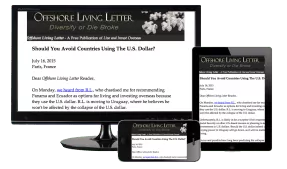
The Debt Trap And How To Avoid It
Debt Trap
Every time I spend time in the United States (like I am right now), I wonder how it is that so many people are supposedly struggling to just make ends meet… yet everyone seems to be driving a late-model vehicle.
Of course, not everyone is—but it’s the impression I get driving anywhere—highways, cities, small towns, good neighborhoods and bad.
A little research can help explain the phenomenon, and a little logic applied shows how detrimental it is to the general population’s wealth.
Car (Payment) Trouble
Car financing came into existence as part of the business competition between Ford and GM after World War I.
Pierre DuPont invested in GM and was backed by J.P. Morgan Jr. The two of them came up with the idea of General Motors Acceptance Corporation (GMAC) and started selling cars with financing.
It was the beginning of “sell the payment” marketing.
The value of car companies eventually came more from their financing operations than selling cars.
I remember when I was 17, my grandmother was buying a new car for the first time. Somehow, I was over at her house with aunts and uncles when she went to the dealership for the final negotiation and purchase so I tagged along.
The dealership had two offers: cash back or a reduced interest rate.
This was back when car interest was deductible on U.S. taxes if you itemized. The adults sitting in the room were trying to tell my grandmother to take the cash back and pay the higher interest because she could deduct it. This 17-year-old asked two simple questions.
“Grandma, do you itemize on your taxes?” I asked.
“I don’t,” she replied.
The second question was to the salesman. I asked him what the monthly payment under each option was. Turned out that the reduced interest rate option had the lower car payment.
That was the one my grandmother took.
She drove that car until well after it was paid off.
Today, people trade in their cars often and definitely before they are paid off. Dealerships are happy to oblige by rolling over the balance owed on the current car into the new car loan. I’ve seen stories where someone has done this rollover a couple times and owes more debt on the current car than can be believed. Tens of thousands more than the car they are driving is worth and more than they could pay off… ever.
That explains a fair amount why so few older cars are on the road.
It also explains how Americans survive these days. They are sold a monthly payment. Whether it’s a car, health insurance, or their gym membership…
Everything is financed in some way or another, which means you’re paying interest in some way.
Most Americans can’t make ends meet in today’s world.
I know people who make plenty of money but still live paycheck to paycheck.
The reason’s simple—the more money they make, the more payments they buy.
I’m seeing this phenomenon in different ways in other countries, in particular Panama, since I spend so much time there.
Billboards show the quincena payment amount for new houses for the working and middle class. A quincena is the twice monthly pay on the 15th and 30th of the month. They don’t say the actual price of the house in many cases… just the payment.
Of course, making a payment twice a month with every paycheck means you’ll pay less interest over the course of a 30-year loan. However, it’s just the start of the financing syndrome.
Every bank in Panama has been pushing credit cards for the last several years. The banks had more money than they knew what to do with before the pandemic and want to put a credit card in the hand of every employed Panamanian at what amounts to 26% annual interest for at least one bank. However, they explain the interest rate as a monthly charge (2.154%) to make it more palatable.
Of all American exports, the monthly payment for purchase may be the most detrimental to the working class in other countries.
It’s also creating a debtor society that many countries won’t be able to sustain… including the United States in my opinion.
A Mountain Of Debt… An Unaffordable Retirement
The question is when will any particular country be hit by their middle-class debt problem.
In the United States it seems to be a slow-moving process. Those people rolling over the balance on their old car into their new car may be fine with the monthly payments today, but eventually the debt will catch up to them… especially if they keep trying to live a middle-class lifestyle beyond their means.
The buying-a-payment lesson can be translated offshore when looking at real estate and other investment opportunities where the developer offers financing. They’ll let you make payments which can be a great way to start slowly diversifying your investments and wealth overseas.
However, the obvious consideration is to make sure you can carry the payments and make them on time… and that you really want that property or investment.
I’ve seen firsthand people start out making payments for a lot in a development thinking they’ll eventually build on that lot for their retirement… making payments while they are still employed.
It’s a good strategy… until something changes in their lives and they can’t make the payments anymore.
Or they can afford the payments on the lot, but don’t plan or save for actually building their eventual retirement house.
Unless you’re certain you’ll be able to keep up with the payments, don’t get caught up in the payment cycle— whether it’s back home or offshore.
Stay diversified,
Lief Simon
Editor, Offshore Living Letter




